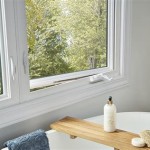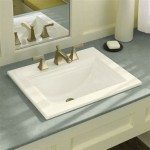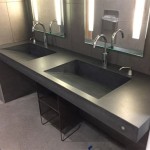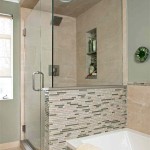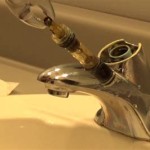What Causes Black Mold in Bathrooms?
Black mold, often identified as Stachybotrys chartarum, is a type of fungus that thrives in damp, humid environments. Bathrooms, with their frequent exposure to water and limited ventilation, provide ideal conditions for this mold to flourish. Understanding the underlying causes of black mold growth in bathrooms is crucial for effective prevention and remediation.
Excessive moisture is the primary driver of black mold growth. Bathrooms are inherently susceptible to high humidity levels due to activities like showering and bathing. Prolonged exposure to moisture, particularly on porous surfaces, creates a breeding ground for mold spores. These spores are ubiquitous in the environment and readily colonize surfaces where moisture persists.
Leaking pipes and fixtures are significant contributors to moisture problems in bathrooms. Even small, slow leaks can introduce substantial amounts of water over time, saturating surrounding materials and fostering mold growth. Cracked or damaged grout and caulk around sinks, tubs, and showers also allow water to seep behind walls and under floors, creating hidden moisture reservoirs where mold can proliferate undetected.
Condensation is another major source of moisture that promotes black mold growth. The temperature difference between warm, moist air generated during showers and cooler surfaces like walls, windows, and fixtures leads to condensation formation. This accumulated water provides ample sustenance for mold spores to germinate and establish colonies, particularly on non-porous surfaces like mirrors and tiles.
Inadequate ventilation plays a critical role in exacerbating moisture problems and promoting mold growth. Bathrooms without proper ventilation systems or with poorly functioning exhaust fans struggle to remove excess moisture effectively. This stagnant, humid air allows moisture to linger, creating a conducive environment for mold to thrive.
Organic materials provide a food source for black mold. Common bathroom materials such as drywall, wood, paper products, and certain types of insulation contain cellulose, a substance that mold readily consumes. When these materials become damp, they become a prime target for mold colonization and growth.
Poor cleaning practices can contribute to mold growth. Infrequent cleaning, particularly in areas prone to moisture accumulation, allows soap scum, dirt, and other organic debris to accumulate. These residues provide additional nutrients for mold, further fueling its growth. Furthermore, neglecting to dry surfaces thoroughly after cleaning can leave behind residual moisture that encourages mold development.
Flood damage presents a significant risk for black mold infestation. Flooding from severe weather events, plumbing failures, or overflowing fixtures can introduce large amounts of water into the bathroom, saturating building materials and creating widespread moisture problems. The extensive moisture and potential contamination from floodwaters significantly increase the likelihood of rapid and extensive mold growth.
The use of certain building materials can influence mold susceptibility. Porous materials like drywall, wood, and certain types of insulation absorb and retain moisture more readily than non-porous materials like tile and fiberglass. This increased moisture retention makes these porous materials more susceptible to mold growth. Proper sealing and waterproofing of these materials can help mitigate this risk.
High humidity levels in the surrounding environment can also contribute to bathroom mold problems. In climates with consistently high humidity, bathrooms are more likely to experience moisture buildup, even with proper ventilation. This elevated baseline humidity can accelerate mold growth and make it more challenging to control.
The age of the building can be a factor in mold susceptibility. Older buildings may have pre-existing moisture problems due to deteriorated plumbing, inadequate insulation, or structural damage. These issues can create hidden moisture reservoirs and pathways for mold growth. Additionally, older buildings may have been constructed with materials more susceptible to mold colonization.
The presence of other mold species can influence black mold growth. Certain mold species may create conditions that favor the growth of Stachybotrys chartarum. For example, some molds produce enzymes that break down cellulose, making it more accessible as a food source for black mold.
The temperature within the bathroom plays a role in mold growth. Black mold thrives in temperatures between 77 and 86 degrees Fahrenheit (25-30 degrees Celsius). Bathrooms, particularly those with limited airflow, can often reach these temperature ranges, creating favorable conditions for mold development.
Lack of natural light can also contribute to mold growth. While mold does not require light to grow, some research suggests that UV light from sunlight can inhibit mold growth. Bathrooms with limited natural light may be more susceptible to mold proliferation.

What Do About Black Mold In The Bathroom Bob Vila

Black Mold In Shower Is It A Cause Of Worry And What To Do About Aqa

Is Black Mould In The Bathroom Dangerous Dbs Bathrooms

Why Is There Black Mold On My Bathroom Ceiling Medics

Killing Preventing Black Mold In The Bathroom

How To Treat Black Mold In Your Bathroom A J Property Restoration

How To Remove Black Mold From Your Shower Clean Tips

Why Is There Mold On My Bathroom A J Property Restoration Dk

Cleaning Black Mold In The Shower

Mold In Toilet How To Remove
Related Posts
